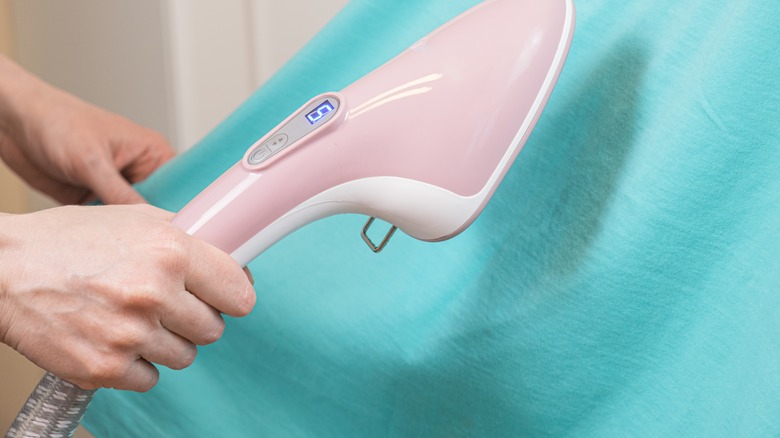How To Steam Dry-Clean-Only Clothes To Extend Freshness
In the world of clothing maintenance, the label "Dry Clean Only" often signals a trip to the dry cleaners, a necessary but sometimes inconvenient and costly endeavor. However, steaming your clothes can help extend their freshness. It's a gentle yet effective way to remove wrinkles, refresh fabric, and eliminate odors. Whether you're using a handheld steamer or the steam function on your iron, the key is to approach this method with care, paying attention to the type of fabric and each garment's specific needs. From silk blouses to wool suits, each material requires a slightly different approach, but the underlying principles remain the same.
If you don't have a steamer, a regular iron can also do the trick, albeit with a bit of finesse. First, ensure your iron has a steam function. If it does, you'll first need to clean your iron plate and ensure there's no leftover residue that could transfer to your clothing. Next, fill the water reservoir of the iron. Let it heat up to a temperature suitable for your garment — most irons will have a fabric guide. Use distilled water in the iron to prevent mineral buildup, which could lead to spots on your garments. Additionally, if your iron has a temperature control, adjust it according to the fabric you're steaming to avoid any damage. If you'd rather use a steamer but don't own one, it helps to understand what features to look for when purchasing one to ensure you steam dry-clean-only clothes correctly.
Choosing the right steamer
When on the hunt for the right steamer, you can choose a handheld one. These compact devices are popular for their convenience and portability, ideal for quick touch-ups and travel. For larger items or more frequent steaming, consider investing in an upright steamer. These steamers typically have larger water tanks, providing longer steam time and more power to tackle stubborn wrinkles.
Before choosing a steamer, look for features such as adjustable steam settings, which allow you to customize the steam output for different fabrics and items, considering there are many other things you can steam clean. A model with a fast heat-up time saves you waiting, making it easier to fit steaming into your busy schedule. Additionally, check for attachments like a fabric brush, which can help remove lint or pet hair, and a press pad to create a more polished finish.
Before using the steamer, make sure to thoroughly review the steamer's manual to ensure you grasp its operation. When you're ready, prepare your steamer by filling its tank with water, then switch it on. Allow the device to heat up for a couple of minutes. To ensure it's working properly, conduct a quick test by activating the steam function to verify there are no malfunctions. Allow sufficient time for the water to transform into steam. Additionally, keep in mind that certain fabrics are not suitable for steaming. These include any material prone to melting, such as plastic, as well as suede and wax fabrics.
Steaming technique and fabric care
Before you begin steaming, hang your garment on a sturdy hanger. If you're using an iron for steaming, you can consider laying the clothing item on an ironing board. When you're ready, hold the steamer or iron nozzle slightly away from the fabric. Start with the fabric's lining from the top and gently move down in a vertical motion, allowing the steam to penetrate the fibers and relax them.
Pay close attention to the fabric's reaction to the steam. For thicker fabrics, you might need to go over the same area a few times. Never press the nozzle or iron directly against the fabric, especially for very delicate or heat-sensitive materials. Instead, keep a slight distance to prevent any potential heat damage. Use your free hand to pull the fabric taut, helping to smooth out tough wrinkles more effectively. Heavier materials, such as wool and velvet, also benefit from a bit more distance between the steamer and the fabric to avoid shrinking or flattening the texture. For garments with embellishments or prints, steaming from the inside out can help protect the design while still refreshing the fabric. When the steaming session is over, keep your clothing hanging to let it cool naturally. Given that steaming tends to leave behind a bit of dampness in the fabric, it's important to let it fully dry in the air before putting it back in your wardrobe.


